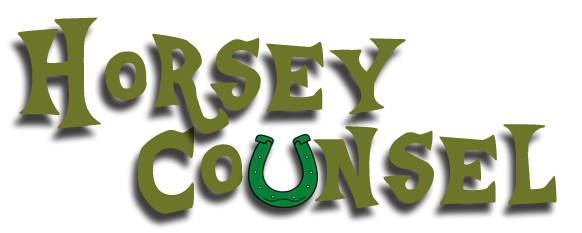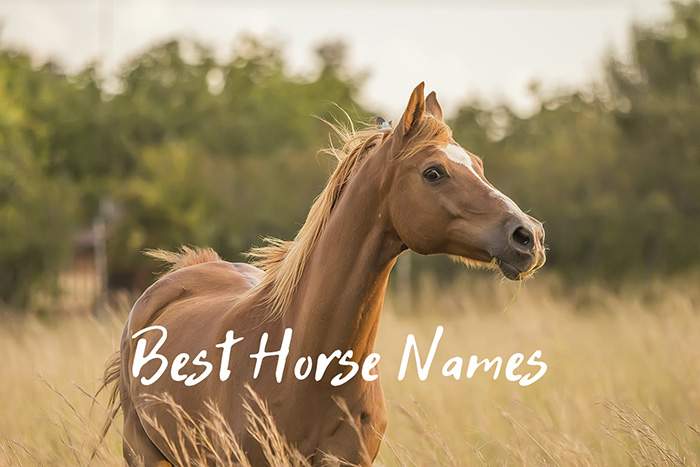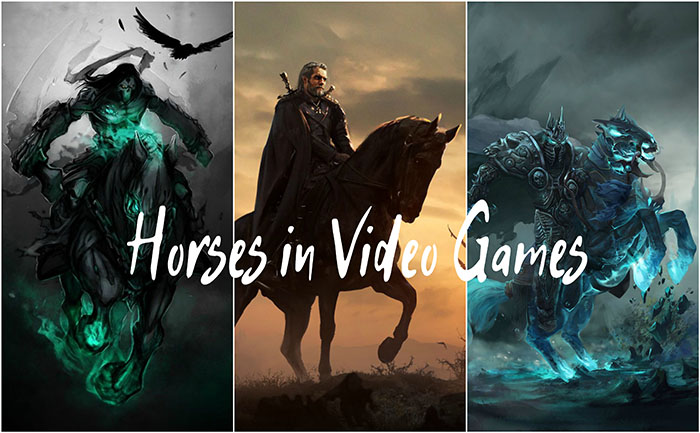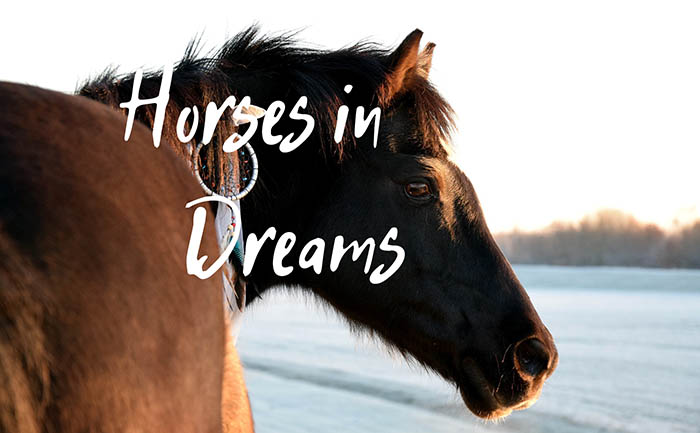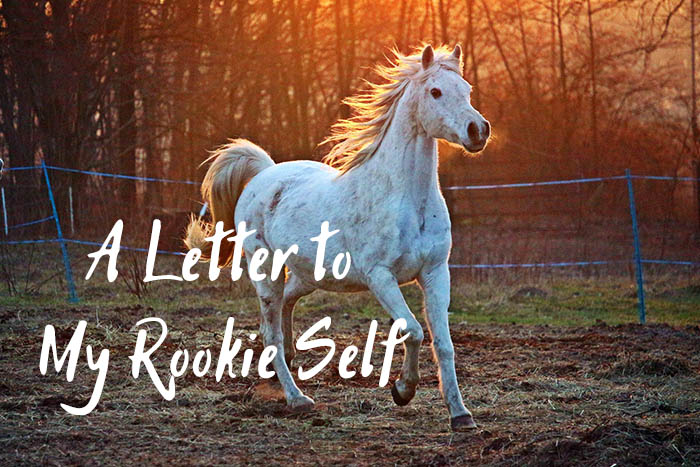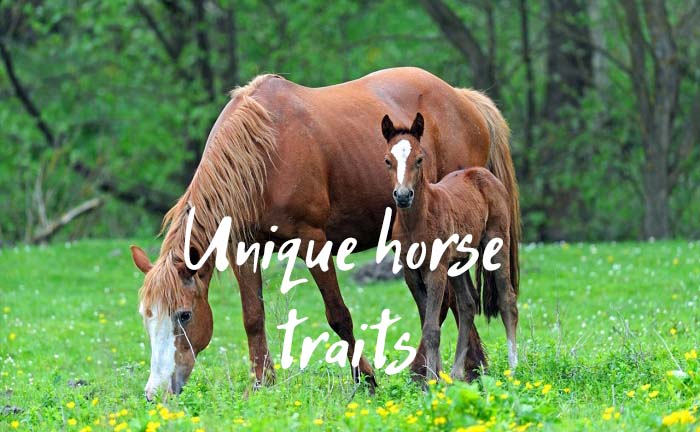11 Most Important Horse Sports & Events
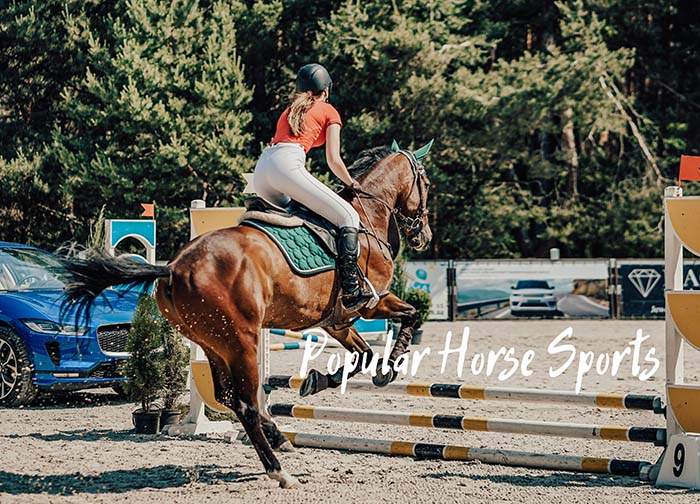
Equestrian sports have been around since Ancient Greece, and they still enjoy immense popularity among horse experts and amateurs alike. Indeed, sources indicate that the first forms of dressage were developed to prepare horses for war. Today, many horse sports and events are recreational in nature, although some competitions are still taken very seriously.
Some of the most important and popular equestrian sports and events include harness racing, point-to-point, dressage, eventing, vaulting, cutting, barrel racing, reining, show jumping, and mounted archery.
I have practiced some of these myself, although definitely not on a professional level. The rest I’ve watched from afar and I have to say that my absolute favorite equestrian event is dressage. It is also one of the oldest and one of the most elegant forms of interaction with horses. Below, you will find a comprehensive equestrian sports list that details each activity, including its history, best practices, and popularity.
11. Harness racing.
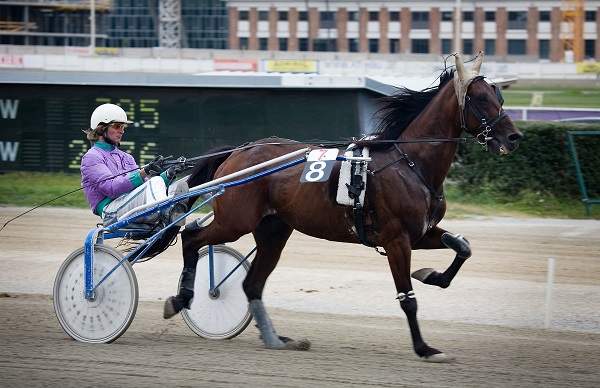
The most important thing you need to know about harness racing is that all horses participating in this competition need to race at a specific gait. This can be either a trot or a pace. Furthermore, horses usually pull a two-wheeled cart that is occupied by a driver. Although not at all common in the United States, in Europe the jockeys don’t use a cart at all but instead ride the horses directly.
In the States, only Standardbred horses are allowed to participate in harness racing, but Europe also allows Russian Trotters or French Trotters to participate. As I mentioned before, the horses can race using one of two gaits: the trot or the pace. While trotting, horses will move their legs forward in diagonal pairs, while the pace involves moving the legs laterally.
The world’s most popular trotting race is the Prix d’Amérique, which takes place every year in January at the Vincennes hippodrome in eastern Paris.
10. Point-to-point racing.
Also known as steeplechase, point-to-point racing is a type of horse racing that normally involves hunting horses and amateur riders. This type of horse sport is particularly popular in Ireland, where the event is open to licensed professional trainers. Point-to-point racing is often regarded as a doorway to compete in National Hunt races.
Moreover, horses that win their debut in point-to-point often sell for good money. As far as breeds are concerned, participating horses need to be Thoroughbreds. Furthermore, the horse’s owner needs to obtain a Hunter Certificate from the Master, and he needs to be a member, subscriber, or farmer of a recognized pack of Hounds.
As you can see, it’s not easy to qualify for a point-to-point race, but the rewards for participating, and even winning such an event are substantial. During the races, horses will jump over fences. They will also pass by different segments marked by flags, hence the term “racing between the flags.”
Normally, point-to-point races require a minimum of three miles, but some of them can go on for longer than that. Fine examples include the Heythrop Men’s Open and the 3¼m Lady Dudley Cup.
9. Dressage.
Dressage is an Olympic event, as well as an equestrian sport defined and recognized by the International Equestrian Federation. Many have described dressage as the “ultimate expression of horse training.” Indeed, after having witnessed some of these outstanding events myself, I can concur that they are absolutely breathtaking.
What makes dressage particularly beautiful, and difficult, is that the horse and the trainer need to perform a series of pre-determined movements completely from memory. Therefore, dressage can also be regarded as a fine expression of equine intelligence. Horses have a natural athletic ability, as well as a desire to perform. Dressage aims to bring these aspects to the surface, to show what a horse is really capable of with proper discipline and training.
In dressage competitions, the trainer and horse need to perform a series of movements ridden within a standard arena. Judges evaluate each of these movements and assign them a score from 0 to 10. Horses that participate in dressage are turned out to an exceptionally high standard. Most commonly, they will have braided manes (not tails), polished hooves, and trimmed coats. Riders also dress formally for the competition.
8. Eventing.
Eventing is one of the more difficult horse sports out there, as it involves three disciplines and not just one. Also known as Combined Training, eventing has a single horse and rider compete against others across the following disciplines: dressage, cross-country, and show jumping.
While an eventing competition can be completed in a single day, it’s usually carried out over the course of three or even four days. The history of eventing traces its roots to a difficult and important cavalry test. The test aimed to establish the mastery level of riders on several different riding types.
There used to be a weight rule to eventing: the horse had to carry a minimum weight of 165 lb (75 kg) (including rider and saddle) during the endurance test. This rule was implemented because military horses were expected to carry such weights while in action. The weight limit was reduced to 154 lb (70 kg) for the 1996 Olympic Games, and it was later removed altogether on January 1, 1998.
7. Equestrian vaulting.
What I love about equestrian vaulting is that it can be practiced both competitively and non-competitively. This means that people can practice and become good at it just for the pure enjoyment of it. Still, given how difficult it is to perform vaulting, and how much coordination it requires, many choose to do it for competitions exclusively.
The best way to describe vaulting is a gymnastics and dance routine on horseback. You’ve probably seen this type of event at circuses or fairs. However, vaulting traces its roots back 2,000 years. You will find most vaulting fans in Europe and in some other parts of the Western World. The good news is that this event is also gaining popularity in the United States northeast.
One of the main rules of equestrian vaulting concerns the performer’s dress code. This code is updated regularly, but one thing has remained constant over the years: the performer must wear a form-fitting uniform. Most vaulters prefer to wear unitards while performing.
6. Cutting.
Cutting is a very interesting equestrian event because it also involves working with cattle. The origins of this activity date back to the old American West when cowboys were hired by farm owners to round up herds of cattle on the open range. Sometimes, one cattle needed to be separated (or cut) from the herd. Separating the cattle is an art form in its own right.
Some horses are able to perform this activity in style and grace, especially if they’re trained for it. In equestrian cutting, a horse and rider appear before a judge or panel of judges and proceed to perform in a 2 1⁄2 minute performance, called a “run.” In that run, the contestant is required to perform at least two cuts from the herd. One of them needs to be straight through the middle of the herd, while the other can be done from either side.
Once the selected cow has been driven away from the herd, the rider will drop the rein hand to feed slack and allow the horse to move freely. At this point, the horse will single-handedly prevent the cow from returning to the herd.
The judge will score the run on a scale of 60 to 80. 70 is usually an average score. Cutting horses are believed to have an innate ability to read a cow’s body language and intended moves. Of course, plenty of training is required to reach a high enough level to take part in cutting competitions.
5. Barrell racing.

A rodeo event, finally! Barrel racing is one of the most spectacular displays of horsemanship and discipline. This horse sport involves a horse and rider, as they attempt to run a cloverleaf pattern around a series of preset barrels. The goal is to successfully perform the run in the shortest amount of time possible.
At youth levels and amateur levels, both men and women compete in barrel racing. However, it’s worth noting that this is primarily a women’s only rodeo event. In the early days, the racing pattern was either a figure-eight or a cloverleaf. Eventually, the figure-eight method was abandoned because it was believed to be too easy.
As the horse and rider attempt to perform the pattern as fast as possible, a laser-based system is used to record their times. In some places, a judge and a flag are used instead. There are certain rules when it comes to barrel placement, as governed by the National Barrel Horse Association:
- A minimum of 15 feet between each of the first two barrels and the side fence.
- A minimum of 30 feet between the third barrel and the back fence.
- A minimum of 30 feet between the timeline and the first barrel.
As far as horse breeds are concerned, the American Quarter horse is the favorite choice for this type of event.
4. Reining.
Reining is a very exciting equestrian sport, particularly if you’re able to get a good, close-up view. It represents a masterful display of discipline and skill, as the rider guides the horse through a series of patterns such as circles, spins, and sudden stops. What makes reining particularly spectacular is that it is performed at a slow gait named lope.
Much like cutting, reining has roots in working cattle. Cowboys needed horses that could anticipate the movements of cattle, stop quickly, and turn in an instant. Over time, they trained their hoses to excel at these types of movements. Reining is basically a Western dressage form, and as such, the rider’s aids should not be spotted easily. The entire performance usually looks as if the horse decides its own movements, which makes it all the more impressive to watch.
In reining, the horse is usually expected to perform between eight and twelve movements. Some of the main movements required to perform these patterns are circles, flying lead changes, rundowns, and sliding stops.
3. Show jumping.
Most of us have witnessed show jumping at some point in our lives. This is perhaps the most popular horse sport out there, and it’s not hard to understand why. As one of the three main equestrian Olympic disciplines alongside dressage and eventing, show jumping has trained horses jumping over obstacles of varying heights.
Different national federations have different rules when it comes to equestrian show jumping. However, some of the most common penalties accepted by all of them include jumping penalties and time penalties. Indeed, a horse needs to jump a series of obstacles without hesitation and without touching the obstacle. However, it also needs to run the entire course in a respectable amount of time.
Also known as stadium jumping, show jumping is a type of English riding equestrian event. It has relatively strict tack and rider attire dress codes: tall boots, helmets with straps, and beige or white breeches are often required.
2. Mounted archery.
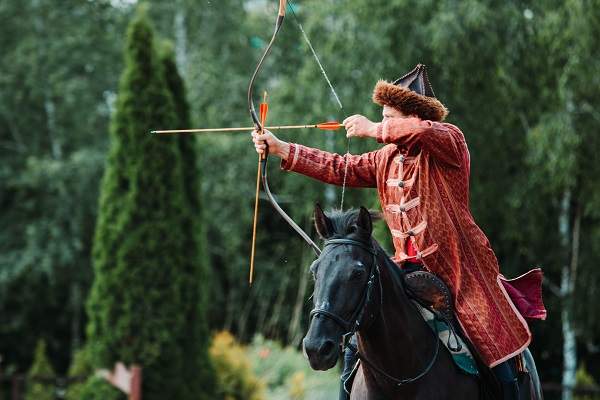
Riding a horse quickly, across obstacles, or in certain patterns is one thing, but riding it and shooting a bow at the same time is on a completely different level. And yet, horsemen have been shooting their bows on horseback for thousands of years. Of course, back in those days, mounted archery was a very respected form of military expression. Nowadays, it’s a moderately popular equestrian sport.
Mounted archery is a traditional discipline in many parts of the world, including Japan, Korea, Tibet, Hungary, and even the United Kingdom. While not an Olympic sport, it’s still being practiced recreationally on a local level in many parts of the world. Horsemen who actually pursue this long-lost art are incredibly dedicated and disciplined, as shooting a bow from the saddle of a galloping horse is challenging on the best of days.
1. Horse racing (flat racing).
Flat racing is one of the most common types of racing in the world. Racing tracks for horses are generally oval-shaped, but there are exceptions to this rule. To give you an example, the Windsor track in Great Britain has a figure of eight shape. Distance-wise, these races go on for 440 yards (400 m) up to two and a half miles (4 km).
A short horse race is generally named a sprint, while a longer one will be referred to as a route. Shorter events are designed to test the horse’s speed, while longer races will test their stamina.
Some of the most renowned horse races include the Kentucky Derby, Dubai World Cup, Epson Derby, Japan Cup, Melbourne Cup, and Prix de l’Arc de Triomphe.
Final words.
In total, there are about 95 horse sports that I know of, many of which include rodeos, hunting events, various forms of dressage, and horse racing. The ones that I mentioned above are just some of the most popular, but the list is far from complete. I could add an honorable mention in the form of hobby horsing, which is slowly being accepted as an equestrian sport even though it doesn’t actually involve a real horse. If you would like me to add another equestrian sport that you’re fond of, don’t hesitate to get in touch.
For me, I’ve always been a fan of dressage and cutting, but I enjoy watching all of these to a certain extent. Now that we’re on the subject, what is your favorite horse sport?
